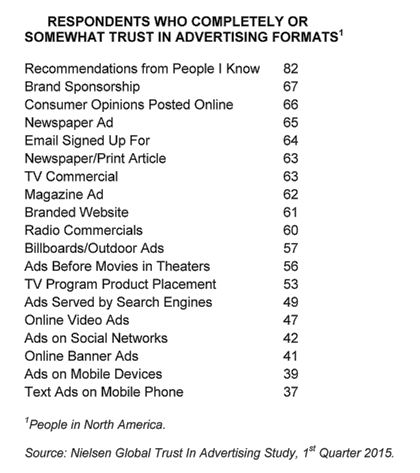
Media Matters goes beyond simply reporting on current trends and hot topics to get to the heart of media, advertising and marketing issues with insightful analyses and critiques that help create a perspective on industry buzz throughout the year. It's a must-read supplement to our research annuals.
Sign up now to subscribe or access the Archives

While generalized studies of this nature must be taken with a grain of salt, the disparity between people's trust in ads on TV, magazines, newspapers and radio relative to digital ads probably reflects the continuing frustration many online users have with the barrage of largely unwanted ads that interfere with their ability to read or scan content (the increase in ad blockers further supports this notion). Audiences of traditional or "legacy" media have long been accustomed to the presence of ads in print and commercial breaks on TV and radio, but these do not diminish their exposure to editorial or program content. In the case of TV and radio, audiences know that the content will stop to allow for an ad break and then resume. Not so with digital, where ads pop up in a helter skelter fashion, while users are trying to navigate on a site or read some item of interest, often causing an extremely negative response by a frustrated user. Such frustration can easily manifest into a lack of interest and trust that is transferred to the advertising.
While the magazine industry was slow to embrace the digital media revolution, it has been making strides in recent years in drawing audiences to its digital editions. According to the Magazine Publishers of America, citing GfK MRI data, in fall 2011, only 1.4% of all adults read a digital edition of a magazine on a monthly basis; by 2012 this percentage had risen to 4.1%; by 2013 it reached 5.4%; and the latest figure is 6.0%.
Magazines and advertisers are pleased with the demographics of digital edition readers. As shown in the accompanying table, they are predominantly younger, well educated and affluent—prime prospects for many ad campaigns.